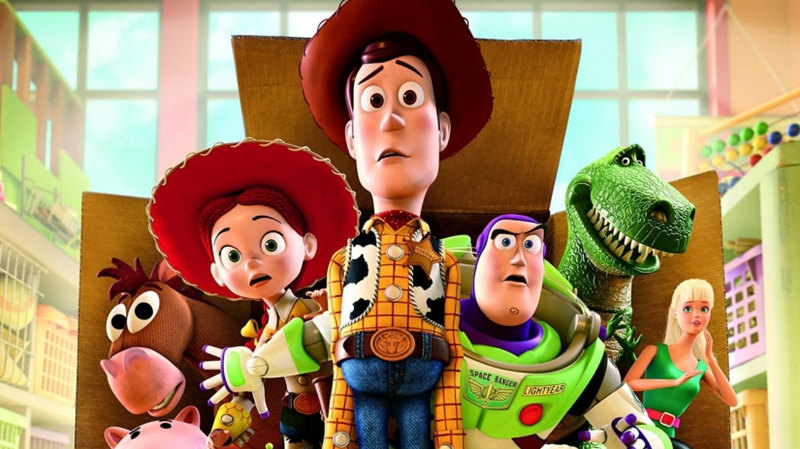I love films that offer commentary on our present culture, and cherish their ability to excessively overdo the minutest details so they can make their points. In some cases, this approach doubles as foreshadowing for the future, and while that future may not pan out in our reality down to the last specific detail, there are probably more similarities than we realize. In that spirit, I’m quite pleased to review the “Mad Max Trilogy,”arriving in a metal keep case from Warner Bros. this week.
Acclaimed by many for a variety of reasons, the most important of which might be formally launching Mel Gibson’s acting career into a new galaxy, the “Mad Max” films remain startling and powerful examples of extreme filmmaking that utilize mood, environment, action and survival as themes to justify their content. Brutally violent and difficult to watch despite their below average run times, each title has a superior entertainment value with few imperfections.
It was my older brother who first introduced me to the “Mad Max” films. I’ll admit that I didn’t really understand his fascination with them at first, and that it took me a few years to mature as a film fan to really see what he saw. I remember asking tons of questions: “Why is that guy always running away from the people chasing him…and why are those people chasing him?” for example. Now, however, I see these titles as ways to look at our world through a lens that can be widened, narrowed or blurred by the very simple but necessary details that they affix their themes and messages.
The consistency with the “Mad Max” films is among the best I’ve ever seen for a trilogy. That’s probably due in most part to director/writer/producer George Miller steering the ship from the first title all the way through the upcoming fourth installment, “Mad Max: Fury Road,” which is due to hit American theaters sometime in late 2013. The dialogue, sets, chase scenes and withering despair that seep from each title are eerily consistent from one film to the next, with details like costumes, cars and facial hair transferring themselves flawlessly. Of course, little things of this nature can be masked by the action and violence. A truly disciplined film buff will hopefully see the big picture.
The series’ first title, “Mad Max,” was released in 1979 and chronicles life in the rural Australian desert following problems with oil supplies dwindling. Violent, roving gangs terrorize the remaining, albeit small, civilization. A motorcycle gang member called Nightrider (Vincent Gil) leads Main Force Patrol officers on a wild chase, with everyone from Roop (Steve Millichamp) to Charlie (John Ley) to Scuttle (George Novak) to Goose (Steve Bisley) not being able to stop him. Max (Gibson) saves the day, however, and causes the Nightrider to crash. His gang, the Zed Runners, don’t disappear quite so easily, however. They terrorize a couple out for a Sunday drive, leaving Max and Goose to find the pair in despair. When attempt to bring down one of the gang’s members fails and he is released, he comes after Goose. Max is distraught, and before resigning decides to wander away with his wife Jessie (Joanne Samuel) and their infant son to think about his future. After Toecutter (Hugh Keays-Byrne) and Bubba (Geoff Parry) lead the Zed Runners to kill Max’s family, his rage overcomes him and he commandeers a very badass Ford XB Falcon to pursue, stop and kill his enemies.
The title I’m most familiar with, and I would also argue the best of the three, is “The Road Warrior.” Released in 1981 to significant acclaim from most outlets, this darker than dark film picks up with Max wandering the Australian desert as signs of civilization from “Mad Max” are all but extinct. After fending off some bandits who seek to ruin his day, Max (Gibson) connects with the Gyro Captain (Bruce Spence) who leads him to a small oil refinery in the middle of the wasteland. He arrives to find a group of heavily armed marauders, led by The Humungus (Kjell Nilsson), giving the refinery’s civilians an ultimatum: walk away, leave the gasoline and survive. The civilian leader, Pappagallo (Michael Preston), makes a deal with Max, stating that if he can deliver a semi-truck from the wasteland to the refiner so the civilians can transport their gasoline, he’ll leave with his car and a full tank. The film’s lengthy climax follows Max and the civilians battling the Humungus and his bandits, with a gasoline tanker and survival as prizes for victory. The film’s final chase stands out in my mind as one of the more memorable, violent and high octane stretches in modern cinema. The accompanying music is about as well placed as any I’ve ever experienced.
The final title (until the fourth film is released, at least) is “Mad Max: Beyond Thunderdome.” Max (Gibson) lands in shady Bartertown, run by Aunty Entity (Tina Turner) and her loyal cohort of followers. Things have evolved a bit in this context, with everything running on gas from pig feces. Master (Angelo Rossitto) runs this process, and has his own loyal cohort, generating some friendly tension between him and Aunty. When Max shows up, Aunty likes what she sees and sends him into Tunderdome, a gladiator style combat arena, so he can take out Master’s right hand man, Blaster (Paul Larsson). As onlookers chant “Two men enter, one man leaves,” Max refuses to kill his opponent, leaving Aunty to turn against him and banish his presence to the desert. Max discovers some unlikely survivors, and the film concludes as he frees some of Bartertown’s residents and saves his newfound colleagues in the process. Pushing the limits of even the “Mad Max” trilogy, the third film appears as the one that folks either enjoy most or dislike most. It’s my least favorite, probably because it takes so much away from the first two in its storyline and character development.
Let’s not kid ourselves here: at face value, these films are violent, riddled with negative energy, poor language and some extremely rough edged characters. But if you dig in just a bit deeper, you see there is more than initially meets the eye. Gibson’s character is of course the center of attention. He stands out as a man who begins the trilogy out to provide for others, then isolates himself, only to continually try and support the tiny positive remnants of a society that exist. Is his push self-centered first and community focused second? Maybe, but regardless, we are able to analyze his perspective through his actions and ultimately determine that his skill and will power are as durable as the cars he pushes to limitless boundaries. In a short period of time chronologically, Gibson’s career more or less blew up, and the “Mad Max” films are primarily responsible for his success. In fact, rumor has it that Gibson is on board for a cameo role in the fourth film.
Director Miller is also an interesting case study. I mean, look at the man’s filmography. He’s got these super-charged post-apocalyptic “Mad Max” movies under his belt, as well as things like “Lorenzo’s Oil,” “Babe” and “Happy Feet.” The contrast in themes here is striking, but at the same time you can pick out some similarities in terms of beating the odds, the anti-hero, strength in the face of adversity and so forth. This said, Miller is probably the only creative mind that should ever be able to hold the wheel in steering the “Mad Max” series forward. Not having him at the helm would be like casting someone else other than Gibson in the lead role (which, believe it or not, is exactly what’s happening with the fourth installment…reportedly, it’s Tom Hardy, famous for his portrayal of Bane in “The Dark Knight Rises”).
When I tore open the FedEx envelope and discovered the “Mad Max Trilogy,” I immediately thought back to my younger days and wondered if watching them all back to back in high definition would refocus my perspective. My expectations were exceeded in purely positive ways, and I appreciate now more so than ever before the (in)direct commentary offered, as well as the balance in themes, environment and pace. It’s almost as if everyone gets what they deserve in some capacity here, with a single character controlling his fate and others through his choices and struggles.
Given that this is the first time all three films are plopping on Blu-ray disc in one packaging, it’s probably a must have for the most dedicated fans. These are titles that must be absorbed in one’s home theater and not on television. They’re also movies that say more than you first realize, evidenced by the fact that they only get better with additional viewings.
Video:
Each of the three titles is presented in a mighty sharp 2.40:1 1080p High Definition video transfer that has transferred little to no original grain. There are few action films, save for the most recent James Bond titles and maybe the Bourne flicks, where the editing is on point and swift. In fact, you might be able to argue that the “Mad Max” series helped to influence modern day editing in a number of important regards. The barren elements to the Australian desert are visually depicted with extreme specificity, and you’ll feel isolated, hot and filthy if you watch these films enough. The visuals also help to convey their share of emotion throughout, especially in “Mad Max” and “The Road Warrior” (I’m thinking especially of the scene near the end of the second film where Max discovers that the tanker he was driving was filled with sand and not gasoline). All in all, these are wonderful transfers that make me smile because they restore my faith in HD, given their age.
Audio:
Perhaps an overlooked element to the “Mad Max” films, the sound plays a critical role, and it is ever so good. I didn’t realize how much I appreciated it until I watched each film in HD, and now, more than ever, top quality audio stands out in my mind as a must have. “Mad Max” provides DTS-HD Master Audio Australian English options in 5.1 and 1.0, as well as an American English dubbed 1.0, plus French Stereo and Spanish 1.0. “The Road Warrior” provides DTS-HD Master Audio selections in English 5.1, Dolby Digital French 2S and Spanish 5.1 and 2S. “Mad Max Beyond Thunderdome” offers DTS-HD Master Audio selections in English 5.1, a Dolby Digital French 2.0 and Castillian (2.0) and Latin (1.0) Spanish options. There’s something very special about “Mad Max” with the original Australian dubbing, as it deepens the authenticity in a way I didn’t anticipate. “The Road Warrior” is mighty short on dialogue, but the action, especially weaponry use, more than compensates. “Mad Max Beyond Thunderdome” is heaver on dialogue than need be, but its original songs, including those from Tina Turner, are easy to take in.
Extras:
If the “Mad Max Trilogy” has a downfall, it is probably the special features. Nothing whatsoever for “Mad Max Beyond Thunderdome” is provided, which shocks me. “The Road Warrior” offers commentary from director Miller and cinematographer Dean Semler, while “Mad Max” provides a commentary and one featurette. I’m not frequently one for special features myself, but heck, I can’t even speak to them if they aren’t there.
A Final Word:
Let’s not kid ourselves. These are films that, while a bit unnerving and far from family friendly, have attracted a dedicated following that isn’t afraid to express their loyalty. They are also better made than most, both from in front of and behind the camera. While I’m not the biggest “Mad Max Beyond Thunderdome” fan, the original and “The Road Warrior” are excellent. As a whole, this set deserves shelf space, if for no other reason than because it helped to both define and refine the post-apocalyptic classification. And, darn it, they’re also kind of fun to watch.


